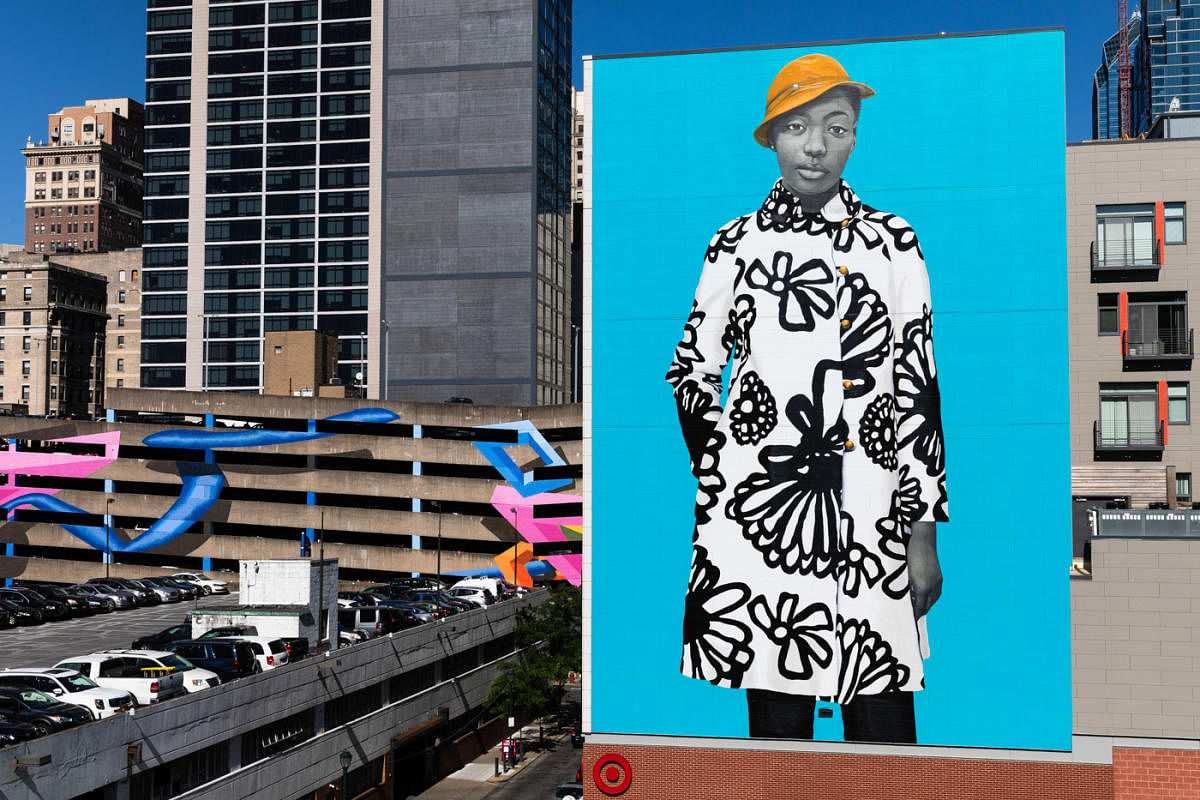

Amy Sherald’s depiction of Breonna Taylor (a 26-year-old African-American who was killed in a botched police raid in 2020) has been called the most important painting of the 20th century. Amy made headlines even before this painting with her official portrait of Michelle Obama in 2018. But it’s her untitled mural in Philadelphia that probably attracts more eyeballs than her more celebrated artworks. I don’t think I’ve seen a more striking mural in America. It reflects her trademark style that captures everyday moments within the lives of African-American people and how people construct their identities. It’s also a testimony to the success of America’s largest public art programme, an initiative that has earned Philadelphia the reputation of the ‘World’s mural arts Capital’.
A year ago, I walked the streets of Malleshwaram in Bengaluru, a neighbourhood that is an integral part of my childhood. That visit wasn’t about reliving childhood memories but to appreciate ‘Malleshwaram Hogona’ — an initiative by citizens collective Bengaluru Moving in tandem with art collective Geechugalu. These 12 murals (including my favourite — Within her stride by Anpu Varkey) have transformed the neighbourhood; I only wish they were, even more, easier to find. Like Andy Warhol once said — “I don’t think art should be only for a select few. I think it should be for the mass of the people.” That’s undoubtedly been the driving force behind Mural Arts Philadelphia which has consolidated the city’s reputation as an art capital whose appeal goes beyond just art connoisseurs. It’s hardly surprising considering the Barnes Foundation — one of the city’s most celebrated art museums was built on the democratisation of art. As early as 1908, Alfred C Barnes (who
made his fortune from Argyrol, an antiseptic compound) brought some of his art collection into his laboratory to spark discussions among these workers. The emphasis was eventually to teach students how to understand and appreciate art without an art historical background.
Dr Barnes was a firm believer that people — like art — should not be segregated. Albert Barnes’ vision to democratise art might have been panned by art critics in the 1920s but the Barnes Foundation has changed the way visitors appreciate art. Barnes chose an ensemble route arranging his collection in an unconventional manner mixing paintings, decorative art and utilitarian objects. I was last here to experience Modigliani Up Close which puts the spotlight on how Amedeo Modigliani — one of the 20th century’s most celebrated painters, created his works. Today, the Barnes Foundation’s collection has grown beyond 4,000 including over 900 paintings valued at $25 billion that feature iconic names like Picasso and Matisse.
While the Barnes Foundation has grown to become one of America’s most visited art museums, it’s impossible to keep track of the number of people who walk past Philadelphia’s street murals across the city. The programme began as a response to what was once seen as a public nuisance, an act of vandalism that was made easier by the weapon of choice — a spray can. In the 1970s and 80s, New York City’s administrators waged a battle against street graffiti.
In 1984 the Philadelphia Anti-Graffiti Network was founded by the city’s former Mayor Wilson Goode to combat the spread of street graffiti. Within a couple of years, this morphed into the Mural Arts Project headed by artist Jane Golden. She worked with graffiti writers to redirect their energies into constructive public art projects. The goal was more than just creating public art. The programme was envisioned to be a powerful tool for generating dialogue, building relationships, empowering communities, and sparking economic revitalisation.
The fledgling programme made a huge mark in 1990 with Dr J by muralist Kent Twitchel becoming the first mural installed using the ‘parachute cloth method’. “The mural was universally applauded. It showed that murals have the potential to be great. The level of expectation was raised,” Jane Golden believes that the mural helped alter public opinion about the programme and mural art across the world. “The art snobs, people who’d been looking down at our murals, started to change. There was a ripple effect — foundation grants started to emerge.”
To date, the city has produced more than 4,000 murals since 1984. Locals call it the world’s largest outdoor art gallery and I quickly discovered that it’s not possible to cover all this art in one visit. I explored the city’s murals on several walking tours and hit the streets on a bicycle. I’m sure I only hit the tip of the iceberg.
Aside from Amy Sherald’s untitled portrait that challenges ideas about identity and the public gaze, the other mural that caught my attention was The Promise of Biotechnology. It’s a window into the next generation of scientific advancements. And then there’s Water Gives Life which opens up questions about sustainability and the urban landscape that has transformed a parking lot.
A simple vision has driven Philly’s ambitious mural arts programme — ‘Art ignites change’. After three visits to the city, I can’t agree more. These massive pieces of art that have transformed neighbourhoods, have lessons for art projects in India’s thriving metropolises.
You can explore Philadelphia’s Mural Art through a series of walking tours (www.muralarts.org/tours/)